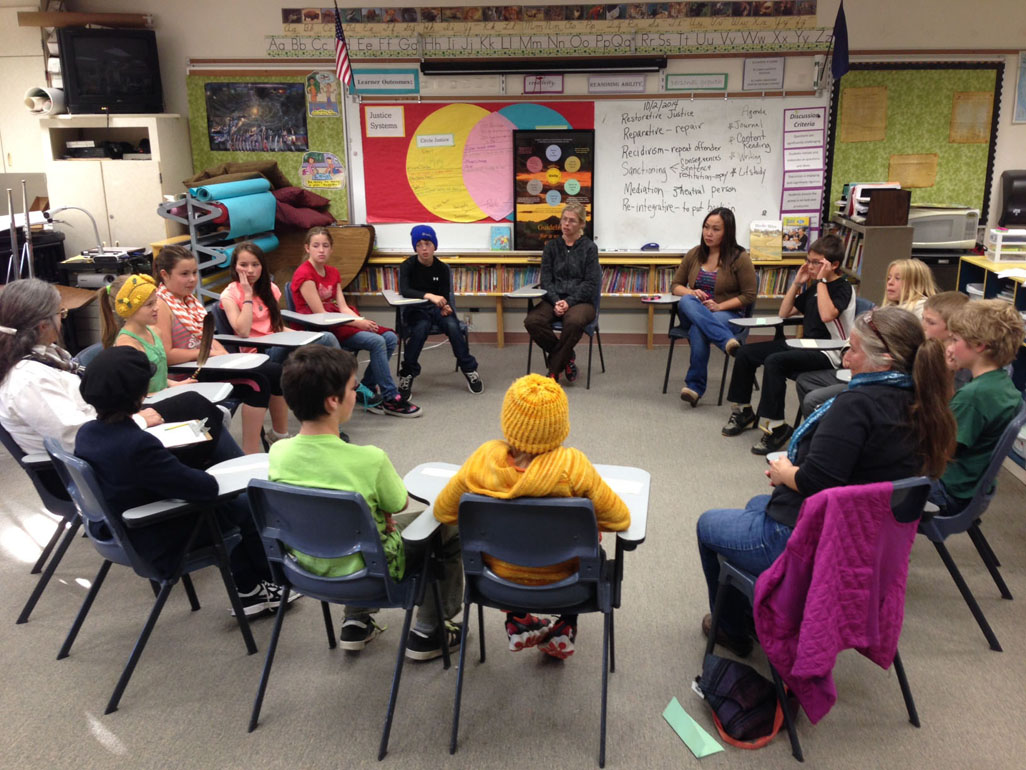In Fireweed Academy the sixth-graders are currently reading a book called “Touching Sprit Bear.” It involves a boy who rips a hole in the community and is helped by circle justice, but apparently Cole, the main character in the book, doesn’t want to change. He gets hurt really bad and that is when he decides that his attitude must change with help from Garvey, a parole officer, and Edwin, a Tlingit Indian.
In our class, we also are studying different justice systems. We made a justice venn-diagram comparing how traditional justice is different from circle justice. In circle justice they try to help you heal inside and out, and in traditional justice they just want you to face your punishment. We also read about four other types of restorative justice and compared their elements to understand how different types of justice could be used for different types of crimes.
Our class did a mock justice circle to a made up crime. We all wrote about possible crime scenarios in our journals. The one that was selected was about a kid who purposely ran over a female moose with his car that was already injured to get the road-kill. It ruined almost all the meat, but he salvaged the little meat that was good. We all got a randomly selected role in the crime and had to act as though we were the actual character.
Ginny Espenshade, a local attorney and sponsor of Youth Court, and Curt Shuey and Vanessa Brazell, Tribal Circle Coordinators for the Kenaitze Indian Tribe and keeper of the circle, helped us along the way. The adults, including our teacher and a parent, participated with randomly selected roles, too. Vanessa shared with us all of the rules and traditions passed down to the latest of circles.
In the circle there was a feather that was always passed to the left. You had to respect the feather and when you got the feather it was your turn to speak. You would speak like your role person and how he or she was affected by the crime and how they thought the punishment could be. We spent an hour and a half discussing to understand the crime and come up with an action plan. But the circle can’t always decide the future of the delinquent; only the court can, depending on the crime.
One student said, “I had no idea that there was so much caring of the feather and so much individualizing of healing.”
“I thought it was very truthful and from the heart,” reported another student.
Curt Shuey, our mentor, wrote to us, “What an inspiring group of well prepared students, and such an education in the process of critical thinking and consultative communication. Thank you for the invite.”
We can all say, this is one learning experience we won’t forget soon!
Laura Inama and Mary Black are sixth-grade students at Fireweed Academy.


